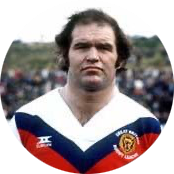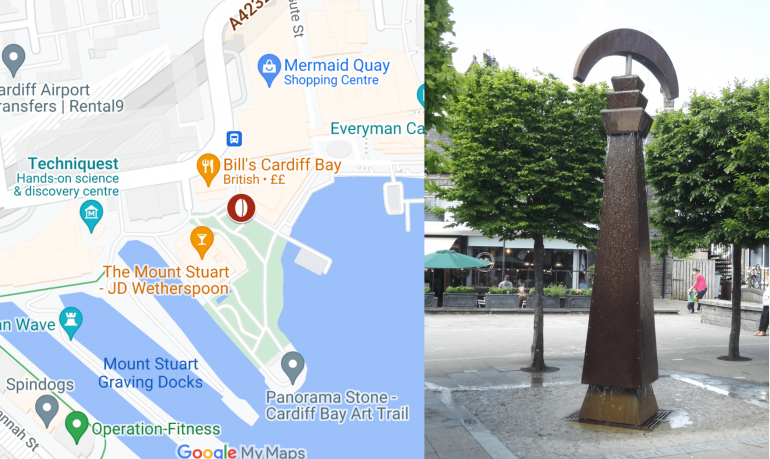The monument commemorating three of the players who headed North in the face of prejudice could be erected in months
PLANS have been approved for a statue of three rugby “codebreakers” in Landsea Square at the heart of Cardiff Bay.
After two years of campaigning, the chairman of the fundraising committee Sir Stanley Thomas OBE hopes the statue will be erected in the next few months.
The statue will honour Billy Boston, Clive Sullivan, and Gus Risman, the final three selected from a list of 13 players who switched codes from union to league.
Many black players were overlooked by the rugby union but became sporting heroes after receiving recognition in the North of England for their talents.
The commemorated trio all grew up within three miles of Mermaid Quay, where the statue will be unveiled.
Landsea Square is tucked away between Bill’s Restaurant and The Mount Stuart Wetherspoon.
Residents of Tiger Bay, Butetown, Grangetown, Adamsdown and Splott voted for their favourite three players out of a choice of 13.
Extra points were awarded based on the success of the players’ careers with the final decision being made by a panel of experts.
Jim Mills, a codebreaker and former professional player who went up North to play for the rugby league, was a member of this panel.

“All three are legends of the game, Billy and Gus were born in the Bay and Clive just not far away in Splott,” Mr Mills told The Cardiffian.
“It’s a great connection of three locals who became legends in the world of Rugby League and are being recognised in their home city.
“The main thing is that it’s in Tiger Bay, and that’s most important. I think the place is as good as any and I’m sure a lot of thought has gone into it.”
Robyn Rich had been calling for a statue to commemorate the sporting heroes for a while.
“Cardiff as a city has a great rugby league history, producing some of the finest players the sport has ever known,” said the 35-year-old.
“It’s not just Risman, Boston and Sullivan and it is to our shame that they are still largely unheralded here when they have been immortalised from Wembley to Hull to Wigan.
“I suppose it is a focal centre close to where the three players were born, but it is a bit out of the way and has no other real connection to them.
“But if it makes Landsea Square more of a destination for people to go to, as I feel it’s a bit forgotten about, then that’s a good thing.”
The panel, which included Jonathan Davies and Welsh rugby league captains Elliot Kear and Rafique Taylor, agreed with the public vote.
“Almost everyone voted for the three that are going on the statue,” said Mr Mills.
The history behind the rugby codebreakers
The term ‘codebreakers’ refers to the players, largely based in Tiger Bay and the surrounding areas, who switched from union to league.
From 1895 onwards more than 150 Welsh rugby union internationals moved to the North to play rugby League professionally.
Many black players were overlooked by the rugby Union, due to race and class prejudice, but became sporting heroes after receiving recognition in the North for their talents.
It wasn’t until the 1980s that Mark Brown became the first black player to be selected to represent Wales in rugby union.
The statue came about following calls from the Butetown and Cardiff Bay communities for a tribute for the players who were ostracised in South Wales.
The statue will also commemorate the 10 other players considered on the shortlist.
- Billy Boston was born in 1934 and has since been made an MBE for his contribution to the sport. There is already a statue dedicated to him in Wigan where he was signed in 1953.
- Gus Risman’s parents were Russian immigrants living in Tiger Bay. Risman was inducted into the Rugby League Hall of Fame in 1988.
- Clive Sullivan was the first black captain of a British side and captained Wales at the 1975 Rugby League World Cup. He represented Great Britain 17 times and in three world cups and is commemorated in Hull by the naming of Clive Sullivan Way.
“The exceptional achievements of so many rugby players from Cardiff Bay’s, multi-cultural melting pot have for too long been overlooked,” said leader of Cardiff council and vice-chair of the committee Huw Thomas.
“They not only brought honour to themselves, their city and their nation, but also helped to break down the barriers of racism and social injustice.
“It is time for Cardiff to properly celebrate them.”
Gareth Kear, CEO of Wales Rugby League: “In the North of England they all talk about Tiger Bay and the great players who went up to play rugby league from Cardiff.
“We need to reflect on our rich past and use it as a signpost for the future.”



